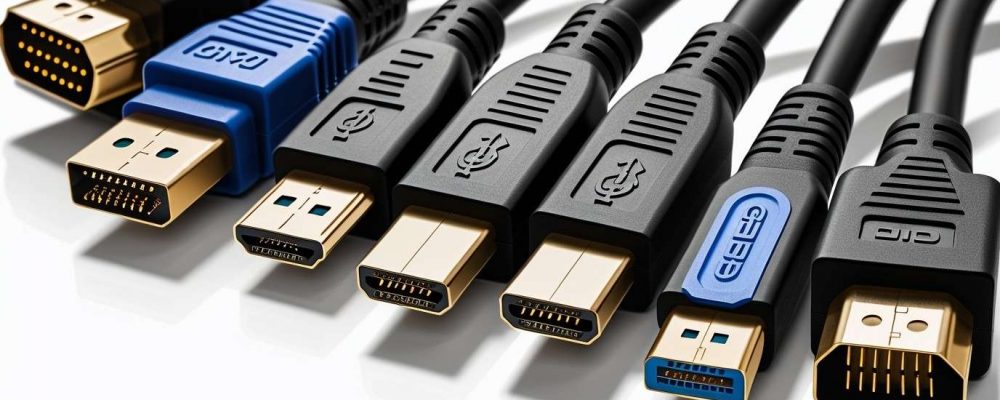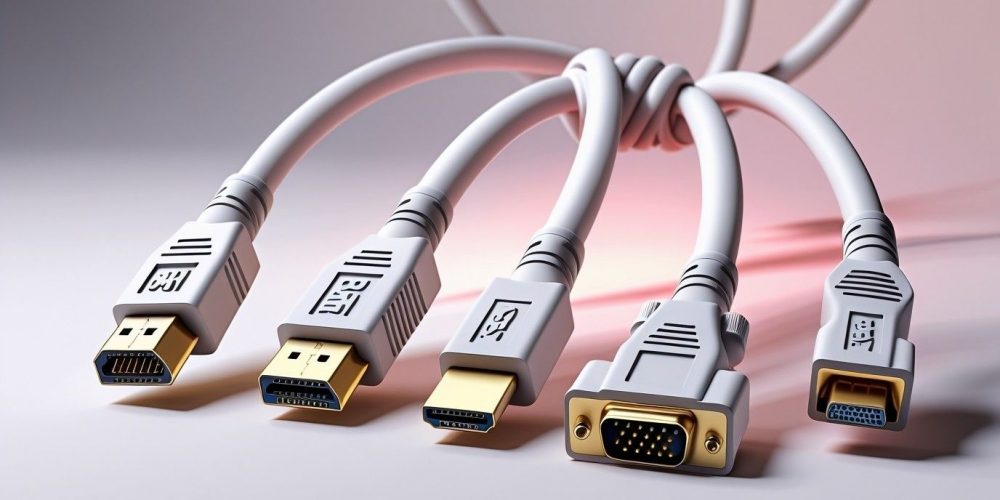Summary: Due to the versatility of the systems it connects, networking, industrial machines, and AV setups need a cord end with a secure, low-impedance electrical connection. There are connectors, each interspersed with duties related to specific data or power roles. By choosing one for an application, you increase its performance, help evade failure, and work toward the system’s long-term durability.

Whether designing or maintaining network infrastructure, industrial machinery, or electronic systems, selecting the right cord end can be of utmost importance, directly affecting the systems’ life, safety, or performance conditions. These cord ends, or cord terminations, create secure electrical connections usable throughout the wiring lengths. They get disclosed to movements and vibrations and ensure that the electrical signals are transmitted consistently and with a low impedance level. For those working at the cutting edge of high-performance networks or complicated electrical systems, an awareness of the types of cord ends becomes important.
This guide explains the types of cord ends and their applications, including technical specifications and the factors an engineer or purchasing person must consider when selecting any type. It serves as an extensive guide, whether one is finalizing a network installation, designing an industrial machine, or trying to maintain the best cabling for its data center.
Cord ends are terminal connections fitted on the ends of electrical cables for secure connection to a device, panel, or perhaps another cable. The three main purposes these serve are:
Properly selected cord ends protect networking cables from loss in signal integrity. They can protect against downtime in industrial machines. On the other hand, the wrong selection can bring about equipment failure, downtime, and heavy supervision costs.
Cord ends are organized based on connection type, design, and application. Below is a thorough breakdown.
RJ45 connectors are the standard of Ethernet networking, and, hence, most LAN environments are built upon them.
Feature | Details |
Cable Type | Cat5, Cat5e, Cat6, Cat6a, Cat7 |
Pins | 8 |
Application | Computers, routers, switches, and patch panels |
Speed Support | Up to 10 Gbps (depending on cable and connector type) |
Advantages | High-speed data transmission, standardized wiring schemes |
Limitations | Susceptible to damage if improperly crimped or bent |
Technical Insight: RJ45-type connectors remove twisted-pair cables, keeping their impedance constant and decreasing crosstalk. In skilled implementations, protected RJ45 connectors should be utilized where heavy interference is predicted for the data transmission to remain stable, especially for PoE (Power over Ethernet) applications.
Normal Use: In data centers, corporate networks, and smart office places, RJ45 connectors make fast, reliable, and easily maintainable connections.
HDMI connectors are all-pervading in the audio-visual systems, working as a conduit for video and audio signals along the cable.
Feature | Details |
Signal Type | Digital video and audio |
Versions | HDMI 1.4, 2.0, 2.1 |
Maximum Resolution | Up to 10K, depending on the version |
Applications | TVs, projectors, Blu-ray players, gaming consoles |
Advantages | High-definition audio-video, single-cable convenience |
Limitations | Cable length can impact signal quality without boosters |
Technical Insight: With Ethernet support, professional installations would transmit 4K/8K videos with minimum latency and minimum interference on a high-speed HDMI cable. Selecting properly certified HDMI connectors will reduce signal degradation over long distances from the point of contact for an AV integrator.
Normal Use: Home theaters, corporate presentation systems, and live-streaming setups depend on HDMI connectors for all-in-uncompressed audio-video transmission.
Universal Serial Bus connectors are the most multi-purpose cord ends in today’s electronics. They connect devices for data transfer, charging, and more peripheral functions.
Type | Primary Use | Technical Specs | Advantages |
USB-A | Computers, hubs | Up to 10 Gbps (USB 3.1) | Standardized, widely compatible |
USB-B | Printers, peripherals | Up to 480 Mbps (USB 2.0) | Robust physical design |
USB-C | Modern laptops, smartphones | Up to 40 Gbps (Thunderbolt 3/4), reversible | High-speed, supports power delivery |
Micro-USB | Mobile devices | Up to 480 Mbps | Compact, legacy devices |
Technical Insight: Being able to supply power up to 100W and achieve high-speed data transfers. USB-C is the best interface for computers, docking stations, and skilled audio/video devices. A correct connector choice can avoid device incompatibility and make for maximum efficiency.
Use Case: USB connectors are important in office layouts, IoT devices, and data-heavy conditions where power and data integrity are critical.
DisplayPort connectors are meant for demanding visual displays and professional computing environments, providing higher refresh rates and multiple monitor support than does HDMI.
Feature | Details |
Signal Type | Digital video and audio |
Maximum Resolution | Up to 8K at 60Hz |
Features | Daisy-chaining multiple monitors, adaptive sync |
Applications | Workstations, professional graphics setups, and gaming PCs |
Advantages | Supports higher refresh rates, MST (multi-stream transport) |
Limitations | Less common in consumer electronics |
Technical Insight: Thanks to DisplayPort technology, a single cord sends video and audio, which helps decrease cable clutter in skilled conditions and supports high-powered computing environments like CAD workstations or video editing setups.
Use Case: Designers, engineers, and IT managers use DisplayPort technology to set up high-resolution shows in a corporate or creative environment.
Each variety of power connector is designed for a particular voltage and current specification. Clean and reliable power connections form the base of all electrical and electronic systems.
Type | Typical Use | Voltage/Current | Advantages |
AC Plugs & Sockets | Household & office devices | 100–240V AC | Standardized, widely available |
DC Power Connectors | Laptops, LED devices | 5–24V DC | Compact, reliable for low-voltage devices |
Barrel Connectors | Portable devices, security cameras | 2–12V DC | Simple, easy to replace |
Technical Insight: A power connector has to be correctly rated to prevent overheating, shorts, and damage to the equipment. For rough conditions, industrial power connectors usually have design considerations, such as locking arrangements and IP-rated insulation.
Use Case: Data centers, manufacturing plants, and consumer electronics require power connectors with the right rating to ensure uninterrupted operation and compliance with safety codes.
VGA connectors support analog video signals and are identified by their 15-pin configurations. Even though HDMI and DisplayPort have taken over many of their applications, these connectors are still used in legacy applications.
Feature | Details |
Pins | 15 |
Signal Type | Analog RGB |
Resolution | Up to 2048×1536 |
Application | Monitors, projectors, and older computing devices |
Advantages | Wide legacy compatibility |
Limitations | Analog signals are prone to interference |
Technical Insight: The VGA connector is suitable for older devices and retrofits where newer digital-type interfaces cannot be supported. The best shielded VGA cable can enhance signal integrity.
Use Case: Refers to corporate environments that have to maintain older-generation equipment or education institutes having older infrastructure, like projectors.
Digital Visual Interface connectors made use of analog as well as digital video signals to connect older and newer display technologies.
Feature | Details |
Signal Type | Digital (DVI-D), Analog (DVI-A), or Both (DVI-I) |
Pins | 24–29, depending on type |
Maximum Resolution | 2560×1600 (dual-link) |
Applications | Desktop monitors, older professional graphics setups |
Advantages | Flexible compatibility, digital quality |
Limitations | Bulkier than HDMI or DisplayPort |
Technical Insight: Dual-link resolutions via DVI connectors are most commonly required by workstations that require this technology due to CAD, 3D modeling, and video production.
Use Case: Legacy high-resolution monitors in design and enterprise IT environments.
Coaxial connectors are used for high-frequency signal transmission, including cable TV, broadband Internet, and satellite.
Feature | Details |
Signal Type | RF (radio frequency) |
Cable Types | RG-6, RG-59, RG-11 |
Applications | TV, internet, CCTV, antennas |
Advantages | Shielded, reduces signal interference |
Limitations | Bulkier, requires precise termination |
Technical Insight: Proper coaxial terminations, such as F-type connectors, would maintain signal integrity over longer distances; otherwise, you would have packet loss in broadband and interference into TV signals.
Use Case: Residential and commercial broadband networks, security camera systems, and satellite installations.
Apart from HDMI, DisplayPort, and VGA cables, specialized video/audio connectors still find relevance in professional AV environments:
Connector Type | Signal | Application |
RCA | Analog audio/video | Audio equipment, DVD players |
S-Video | Analog video | Older video equipment |
Component (YPbPr) | Analog video | High-definition video (legacy systems) |
Technical Insight: Professional AV integrators commonly combine these to maintain backward compatibility or to integrate legacy systems with current AV solutions.
Use Case: Corporate training rooms, legacy media editing suites, and AV rental setups.

The choice of a cord must undergo several technical evaluations:
Electrical Current Rating: The cord end must take that load without overheating.
Choosing the correct cord end is a small matter with great results. With technical specifications understood and thought along with environmental aspects and installation practice, procurement professionals, engineers, and technicians will better make conclusions that prevent system failure and maximize efficiency.
For organizations that rely on complicated cabling infrastructures, investing in top-quality cord ends is a strategic option that maintains performance and safeguards your operations from unnecessary risk. Schedule your consultation now with Network Drops.
Yes—with a power strip or extension cord. Just make sure the total wattage doesn’t exceed the capacity of the outlet to prevent blowing fuses or worse.
Yes—if they’re rated for outside use. Outdoor cables have weatherproof jackets and UV protection. Always check specifications prior to installation.
Maybe—if they’re cheap quality or incompatible. Use good-quality matched cords and keep extension cords short to maintain signal quality.
USB‑A is the older square-shaped connector. USB‑C is smaller, reversible, has faster data transfer, and higher power delivery.
Yes, fiber transmits data using light at a greater speed and distance. Coax transmits electrical signals in shorter runs, such as in-home installs.
"*" indicates required fields
Scott Fcasni is the driving force behind Shock I.T. Support’s commercial datacomm cabling division, delivering expert solutions that power reliable, high-performance network infrastructures. With extensive experience in structured cabling and a commitment to precision, Scott ensures that every project—whether for small businesses or large enterprises—meets the highest standards of quality and scalability.